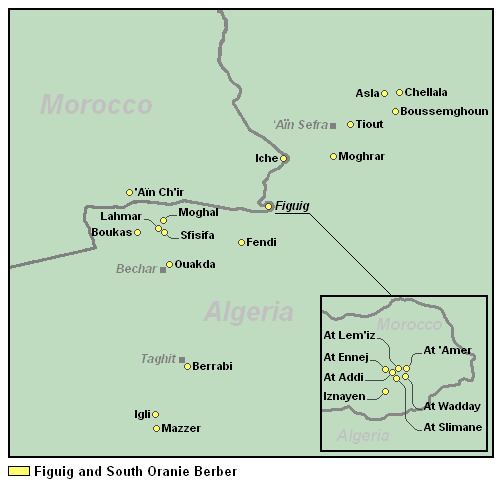ISO 639-3 None (mis) | ||
 | ||
South Oran Berber or Figuig Berber (Figig) is a cluster of the Zenati Berber dialects. It is spoken in a number of oases of southwestern Algeria and across the border in Morocco. These include most of the ksour between Mecheria and Béni Abbès: Tiout, Ain Sfisifa, Boussemghoun, Moghrar, Chellala, Asla, Fendi, Mougheul, Lahmar, Boukais, Sfissifa, Ouakda, Barrbi near Taghit, Igli, Mazzer in Algeria, Iche, Ain Chair, and the seven ksour of Figuig (Ait Wadday, Ait Amar, Ait Lamiz, Ait Sliman, Ait Anaj, Ait Addi and Iznayen) in Morocco.
Of these towns, the only one whose dialect has been studied in any detail is Figuig (Kossmann 1997). A cursory study of the northern dialects, including texts and vocabulary, is Basset (1885), while a sketch grammar of its southernmost member, Igli, is provided by Kossmann (2010).
Like many other Berber varieties, the Figuig Berber dialects use bipartite verbal negation. The preverbal negator is ul (locally un, il); the postverbal negator is ša (Igli, Mazzer) / šay (Figuig, Iche, Moghrar) / iš (Boussemghoun, Ain Chair), with both the latter two appearing as allomorphs in Tiout. The numerals 1–2 are Berber, while higher numerals are Arabic borrowings throughout.
